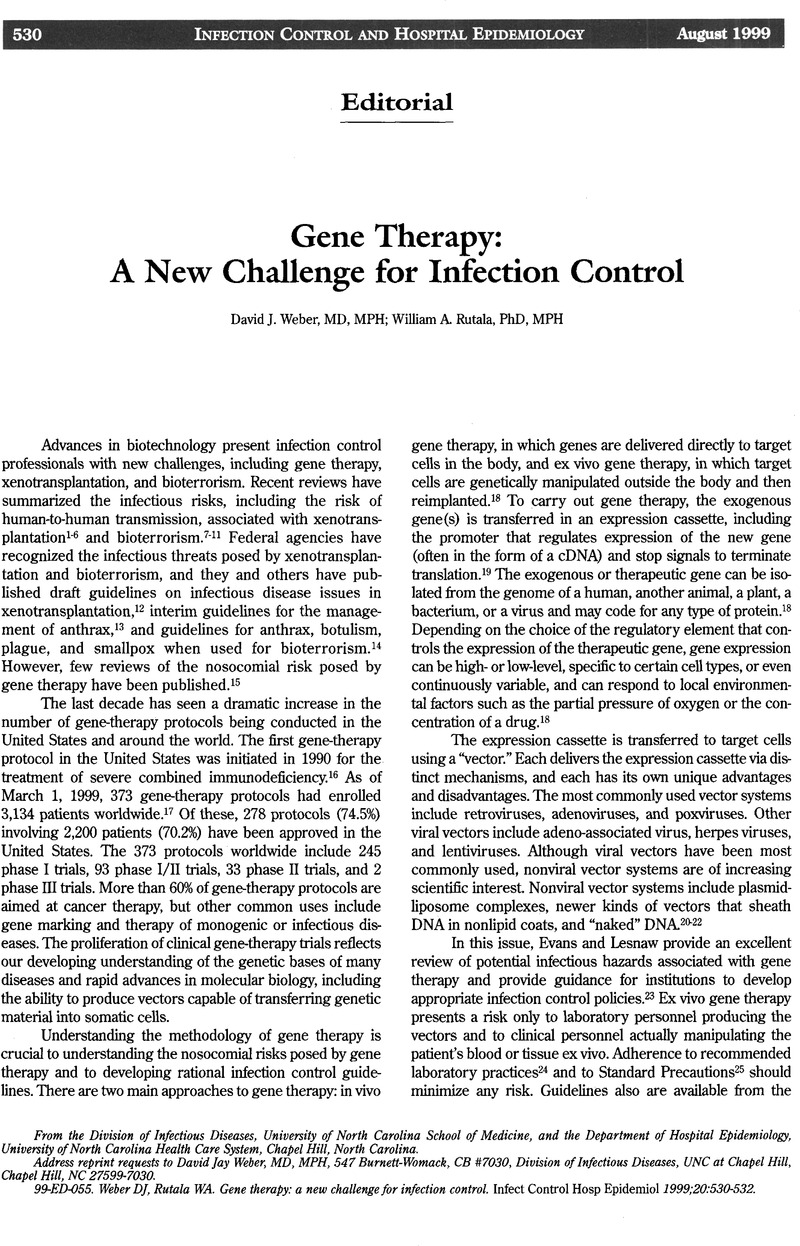Crossref Citations
This article has been cited by the following publications. This list is generated based on data provided by Crossref.
2000.
Gene Therapy and Infection Control: More Light on the Way.
Infection Control & Hospital Epidemiology,
Vol. 21,
Issue. 10,
p.
630.
Armitstead, John A.
Zillich, Alan J.
Williams, Kristal L.
Sitzlar, Stephen C.
and
Wermeling, Dan
2001.
Hospital and Pharmacy Departmental Policies and Procedures for Gene Therapy at a Teaching Institution.
Hospital Pharmacy,
Vol. 36,
Issue. 1,
p.
56.
Hessler, Jack R.
and
Leary, Steven L.
2002.
Laboratory Animal Medicine.
p.
909.
Stoner, Nicola S
Gibson, Rachel N
and
Edwards, Jeanette
2003.
Development of procedures to address health and safety issues in the administration of gene therapy within the clinical setting.
Journal of Oncology Pharmacy Practice,
Vol. 9,
Issue. 1,
p.
29.
Siegel, Jane D.
Rhinehart, Emily
Jackson, Marguerite
and
Chiarello, Linda
2007.
2007 Guideline for Isolation Precautions: Preventing Transmission of Infectious Agents in Health Care Settings.
American Journal of Infection Control,
Vol. 35,
Issue. 10,
p.
S65.
Hessler, Jack
2010.
Handbook of Laboratory Animal Science, Volume I, Third Edition.
p.
145.
Lipman, Neil S.
and
Leary, Steven L.
2015.
Laboratory Animal Medicine.
p.
1543.



